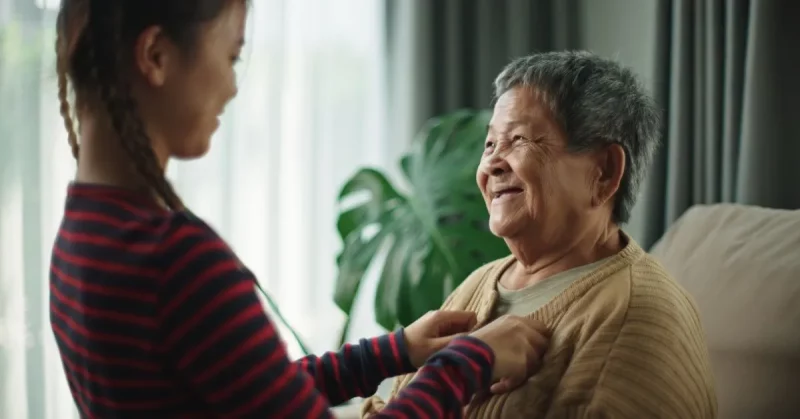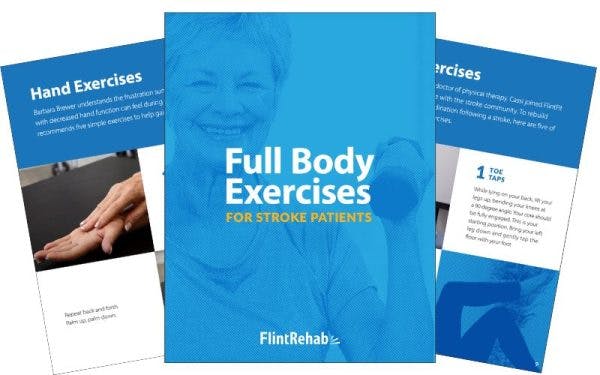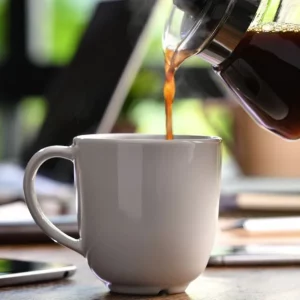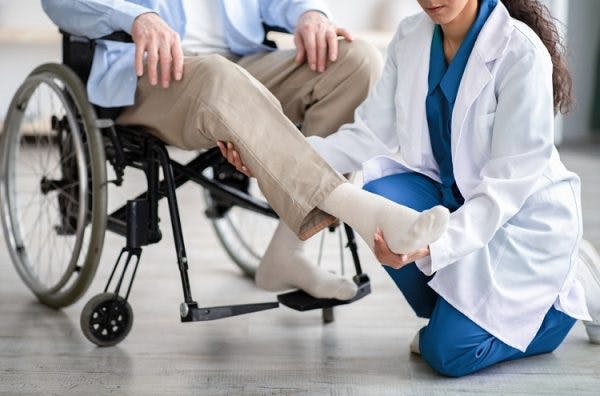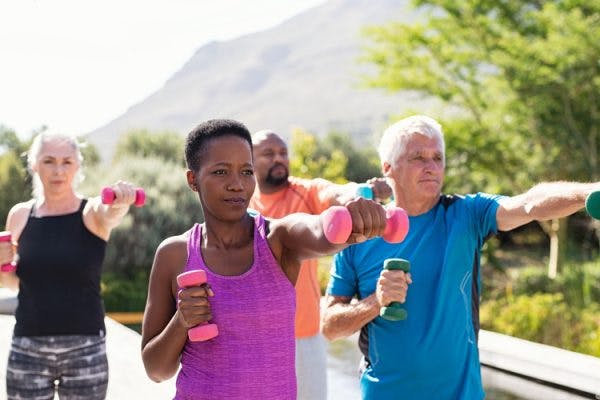Getting dressed is something most of us do without much thought. But after a stroke, this daily routine can feel overwhelming. Weakness, spasticity, coordination issues, or changes in sensation may turn buttons, zippers, and sleeves into major challenges. If you’re finding it frustrating to get dressed on your own, you’re not alone. Many stroke survivors go through this stage of recovery.
The good news is that there are practical strategies and adaptive techniques that can make dressing easier and help restore a sense of independence. In this guide, we’ll cover six effective approaches, along with useful tips to keep the process as stress-free as possible.
Why Dressing Feels Difficult After Stroke
Before diving into the strategies, it helps to understand why dressing can become so tough. Stroke affects everyone differently, but common challenges include:
- Weakness or paralysis: One side of the body may feel weaker or harder to control.
- Spasticity or stiffness: Muscles may tighten involuntarily, making it difficult to move arms or legs smoothly.
- Reduced coordination: Fine motor skills needed for buttons or zippers may not come as easily.
- Balance difficulties: Standing to pull on pants or stepping into clothes can feel unsteady.
- Fatigue: Dressing takes more time and energy than before, which can be draining.
- Cognitive changes: Outside of physical skills, cognitive functions like sequencing, attention, and problem-solving are essential for dressing.
Recognizing these challenges is the first step in finding ways to overcome them. So let’s take a look at 6 strategies you can use to help overcome some of these more common challenges.
1. Choose Adaptive Clothing
One of the simplest ways to make dressing easier is to rethink your wardrobe. Adaptive clothing is specifically designed with stroke survivors and people with mobility challenges in mind.
Features That Help Dressing After Stroke
- Velcro or magnetic fasteners instead of traditional buttons.
- Elastic waistbands that make pants easier to pull on.
- Open-back tops or side-zip clothing that reduce the need for overhead movements.
- Larger zipper pulls that are easier to grip.
Why It Works
Adaptive clothing removes some of the fine motor barriers that can make dressing frustrating. It also helps conserve energy, which can be redirected toward therapy or daily activities.
If specialized clothing isn’t available, consider simple wardrobe adjustments. Loose, stretchy garments often work just as well as store-bought adaptive wear.
2. Use Dressing Aids
Occupational therapists often recommend tools that act as an extra pair of hands. These dressing aids reduce the need for tricky finger coordination or awkward body movements.
Helpful Tools for Dressing After Stroke
- Button hooks: Make fastening buttons quicker and less frustrating.
- Zipper pulls: Provide extra grip and leverage.
- Dressing sticks: Help pull clothes on and off without overreaching.
- Sock aids: Allow you to slide socks onto your foot with less bending.
- Elastic shoelaces or Velcro shoes: Eliminate the challenge of tying knots.
Why It Works
Dressing aids bridge the gap between current ability and independence. Even small tools can make a big difference in reducing reliance on others.
3. Learn One-Handed Dressing Techniques
If one side of your body has more strength and mobility than the other, one-handed techniques can be very effective. Occupational therapists often teach these methods during rehabilitation.
Basic Steps for Shirts
- Start with the weaker arm first.
- Slide it into the sleeve and pull the garment up toward the shoulder.
- Use the stronger arm to guide the other sleeve on and adjust.
Basic Steps for Pants
- Sit down to reduce balance challenges.
- Place the weaker leg into the pant leg first.
- Pull pants up to the knee, then guide the stronger leg in.
- Stand or continue sitting while pulling the waistband into place.
Why It Works
This method reduces the risk of injury and makes use of your strongest side to complete the more demanding movements. In addition to dressing your weaker (affected) arm and leg first, it is usually helpful to undress the affected side last. To remember this, think “in first, out last”. Practicing these techniques builds consistency and confidence over time.
4. Sit Down When Dressing
Trying to balance while stepping into pants or bending to put on socks can increase the risk of falls. Dressing in a seated position provides more stability and allows you to use both hands for support when needed.
How to Do It
- Use a sturdy chair with arms for extra support.
- Keep clothes within easy reach on a nearby table or bed.
- Sit while threading legs into pants, pulling on socks, or fastening shoes.
Why It Works
Seated dressing reduces fatigue, lowers the risk of losing balance, and often makes the process faster. It’s a simple adjustment that can make the entire routine safer.
5. Break the Task Into Steps
Dressing can feel overwhelming if you try to do everything at once. Breaking it into smaller steps makes the process more manageable and less tiring.
Example Breakdown
- Lay out clothing in the order you’ll put it on.
- Start with undergarments and socks.
- Move on to pants, then shirt.
- Finish with shoes or outerwear.
Energy Conservation Tip
If fatigue is an issue, allow yourself short breaks between steps. It’s okay to pause for a moment before moving on to the next piece of clothing.
Why It Works
Approaching dressing as a sequence of smaller tasks makes it feel less daunting. This strategy also helps you notice which specific movements are most challenging so you can focus therapy on improving them.
6. Ask for Professional Guidance
Occupational therapists specialize in helping people regain independence in daily activities, including dressing. Working with a therapist can provide personalized solutions tailored to your unique challenges.
What to Expect
- Customized techniques that match your physical abilities.
- Recommendations for clothing or adaptive equipment that fit your lifestyle.
- Practice sessions to build confidence and reduce frustration.
- Home safety assessments to make dressing areas more accessible.
Why It Works
Professional input ensures you’re using the most efficient and safe techniques. Therapists also help troubleshoot obstacles that may not be obvious, like clothing material, closet setup, or room layout.
Additional Tips for Dressing After Stroke
While the six strategies above form the core of stroke dressing solutions, a few extra tips can help make each day smoother:
- Dress the weaker side first: This prevents struggling to fit the less mobile limb into sleeves or pant legs once clothing is partially on.
- Practice daily: The more you practice, the more automatic dressing becomes.
- Use mirrors: They help check progress and alignment without straining.
- Organize your closet: Keep frequently worn clothes at an accessible height.
- Stay patient: Some days will be easier than others, but small improvements add up.
The Emotional Side of Dressing Challenges
It’s important to acknowledge that struggling with dressing after a stroke isn’t just a physical issue. It can also take an emotional toll. Needing help with personal tasks can affect self-esteem and independence. Many survivors feel frustrated, embarrassed, or discouraged.
If you find these feelings overwhelming, remember that progress takes time. Celebrate small victories, like fastening a button independently or getting dressed a little quicker than before. Connecting with support groups or talking with others who’ve experienced similar challenges can also help reduce feelings of isolation.
How Caregivers Can Support Dressing Independence
If you’re a caregiver, there are ways to provide help without taking over the process completely:
- Offer encouragement, not pressure: Let the person set the pace.
- Assist with setup: Lay out clothes, but allow the stroke survivor to do as much as possible.
- Step in only when needed: Partial assistance promotes independence while still ensuring safety.
- Respect privacy and dignity: Allow space when appropriate, and maintain a respectful approach.
This balance between support and independence often helps survivors feel more confident while still ensuring they’re cared for.
Final Thoughts: Dressing as Part of Stroke Recovery
Dressing after a stroke can be one of the toughest daily challenges, but with the right strategies, it becomes much more manageable. From adaptive clothing and dressing aids to one-handed techniques and professional guidance, there are multiple ways to approach this task.
Above all, patience and persistence are key. Each day provides another opportunity to practice, improve, and build confidence. Whether you’re a survivor working toward independence or a caregiver offering support, remember that progress is possible, and small wins matter.
